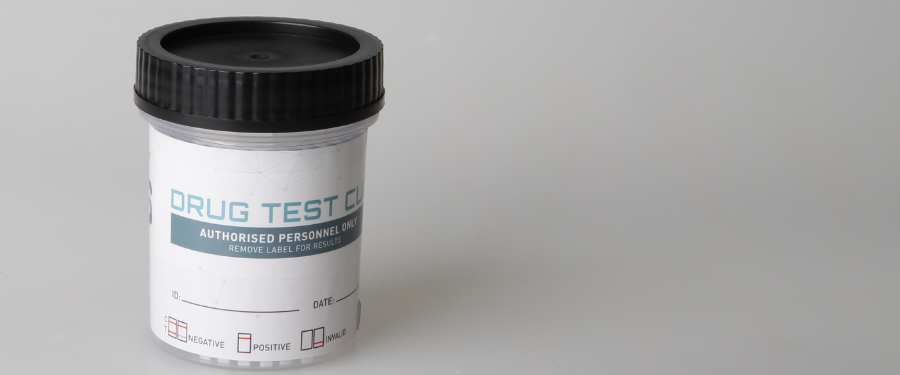As drug testing has become increasingly common in many different institutions and settings, testing via urine drug test kits has become among the two most popular choices, the second being saliva drug testing.
Drug testing, through saliva, or urine, can provide valuable information to health and safety officers, employers and healthcare professionals on a person’s drug use history. This blog post takes a closer look at the types of drugs that Andatech drug test kits are able to detect, factors that affect its accuracy as well as best practices when conducting drug testing at the workplace and beyond.
Types of drugs that can be detected
Andatech drug test kits, whether for saliva or urine samples, are renowned for their ease of use and accurate results. They have been designed to be user-friendly and easy to interpret, making drug testing at the workplace or at home simpler and more efficient. Additionally, Andatech drug test kits conform to the Australian Standard cutoff limits, ensuring reliable and accurate results, even in challenging test environments.
Andatech urine drug test kits can detect up to 11 common major drug groups that are
- Amphetamines
- Cocaine
- Synthetic cannabis
- Benzodiszepines (Valium, Xanax)
- Methamphetamines
- Opiates
- THC (marijuana)
- Oxycodone
- Methadone
- Ketamines
- Barbiturates
Andatech urine drug test kits are also able to detect alcohol at 0.04% BAC.
It’s essential to note that different drugs stay in a person’s system for different periods of time. The time in which a drug stays in a person’s system is known as its detection window. The different drug detection windows depend on a number of factors, mainly the drug of choice, the date of last consumption as well as the type of drug test kit.
Usually, urine drug test kits can detect drugs up to 30 days after last consumption. Hair drug test kits are the most accurate in detecting prolonged drug use as they are able to detect drugs up to 90 days after last use.
Factors affecting accuracy and reliability
The main factors that affect the accuracy and reliability of drug test kits have to do with its sensitivity and the specificity of the test, sample collection, handling, dosage, individual variations in metabolism and extraction, as well as external interferences.
Here are some factors that affect the accuracy and reliability of urine drug test kits:
- Dosage and frequency of drug use: A person that has used drugs once or twice may not have enough of the substance in their system to come up in a test.
- Individual variations in metabolism and excretion: Each person metabolizes and excretes drugs at different rates.
- External interferences: Certain medications, foods and supplements can interfere with drug test results which can cause false positives or negatives. For example, consuming poppy seeds can cause a false positive for opiates.
- Sample collection and handling: Proper sample collection and handling are crucial procedures to ensuring accurate and reliable test results. For on-site drug and alcohol testing, Andatech employs professionals that are HLTPAT005 accredited for professional drug and alcohol specimen collection.
Andatech offers D&A testing courses to help individuals become competent alcohol and drug testing officers in Australia. Being HLTAPT005 accredited will ensure an officer is nationally recognized and reduce the possibility of mishandling test specimens. By registering for a training course with Andatech, officers will also enjoy special savings on drug and alcohol testing devices.
Why drug tests?
Employers and other establishments may administer drug tests for a variety of reasons. Above all, the primary reason for drug tests to be conducted is to ensure the safety of employees, customers and the public.
This reason is echoed in the model Work Health and Safety Act that states that a person conducting business must provide a work environment without risks to health and safety. On top of this, the same act also specifies that workers must be fit and well to carry out their responsibilities and must NOT be under the influence of alcohol or drugs.
Employers can also face liability for the actions of their employees, particularly if their actions while under the influence result in injury or damage. By conducting drug screenings, employers can mitigate the risk and demonstrate a commitment to providing a safe and secure workplace.
In a nutshell, some common reasons to conduct drug testing at the workplace include
- Safety: Creating a drug and alcohol-free workplace ensures safer operations for all parties involved, be it customers, employees, and other patrons.
- Legal requirements: Industries such as transportation and healthcare are required under law to conduct D&A testing for safety. Employers that fail to comply with this law may face legal repercussions.
- Productivity: About $6 billion is lost annually as a result of lost productivity related to alcohol and drugs. By identifying workers guilty of drug abuse, employers can take the necessary steps to improve productivity and maintain safety and efficiency when at work.
- Wellness: Instead of penalizing workers guilty of drug or alcohol abuse, employers can identify individuals going through a tough time dealing with a drug or alcohol addiction and lend a helping hand to help them get through tough times.
Best practices for urine drug testing
To ensure accuracy and reliability when conducting drug tests, health and safety officers, along with other persons in charge of handling the tests, should follow the best practices below.
Using reliable test kits
Andatech drug test kits comply with Australian Standard cut-off limits, provide testing results within minutes and can detect up to 11 major drug groups and alcohol.
Educate officers on proper collection procedures
If testing is conducted internally, the officers involved should have sufficient knowledge of procedures, guidelines, relevant legislation and more.
Using a chain of custody form
Chain of custody books are used to document the collection, transportation and handling of urine samples. This helps prevent tampering and ensures the sample is handled and tested appropriately.
Ensure confidentiality
Drug testing is a confidential and private procedure that should protect the identities of test subjects. Results and samples are only to be shared with authorized personnel. This helps ensure privacy and avoids discrimination.
Use confirmatory testing
Positive test samples are to be sent to pathology labs for confirmatory testing to eliminate any possibilities of false positives.
Andatech offers a wide range of urine and saliva drug test kits to help employers create and maintain a safe working environment. Andatech also helps companies maintain safer workplaces by providing alcohol and drug testing solutions with reliable after-sales support.
Reach out to the Andatech team for help with all your drug and alcohol testing needs.





